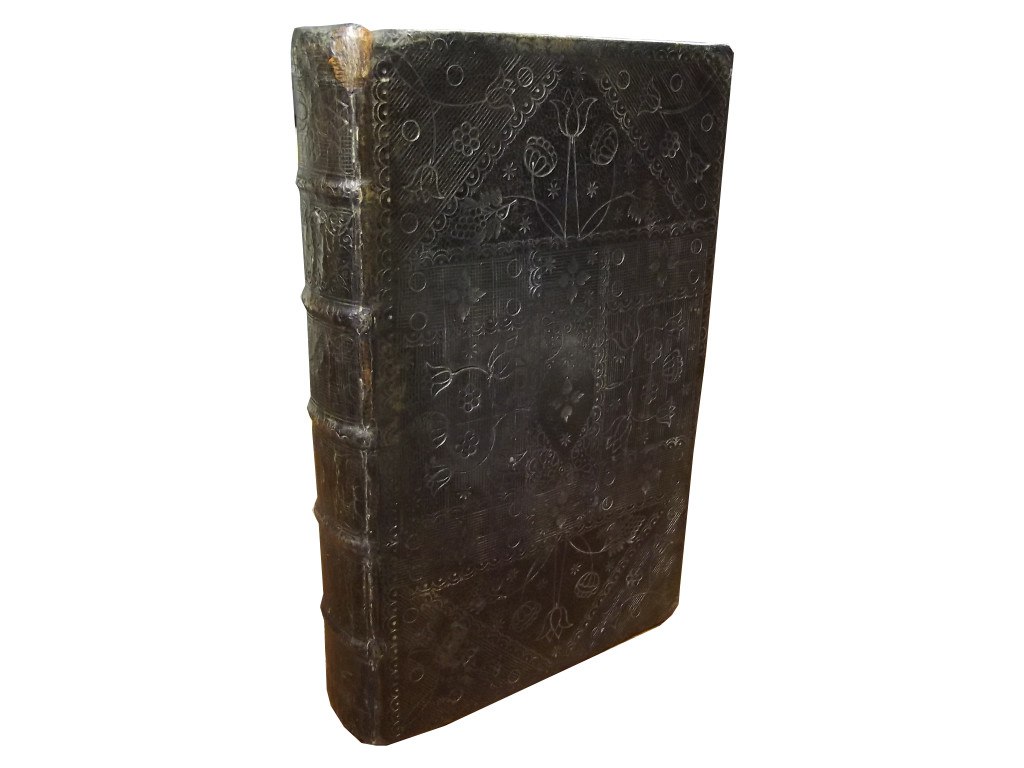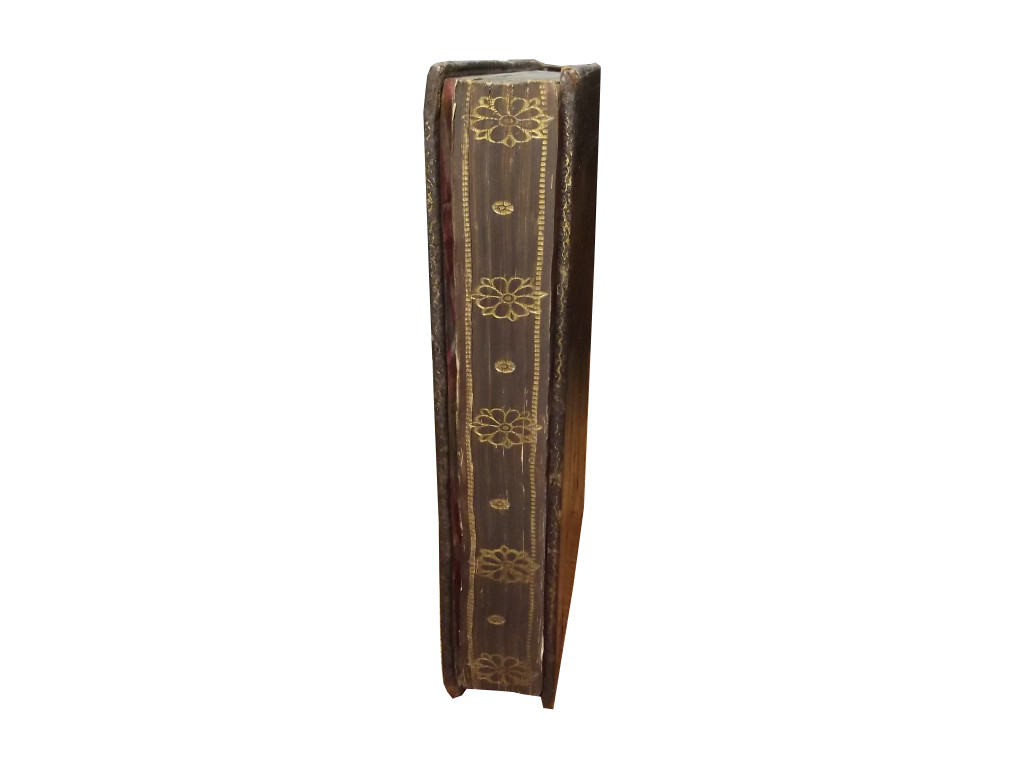An example of a ‘sombre’ binding, this on a copy of Allestree’s ‘Whole Duty of Man’, they are usually, if not exclusively, found on religious and pious texts dating from 1670-1720 and seemingly supplied for mourning use and Lenten observance. Nixon in English Restoration Bindings points out that “mourning in England in the reign of Charles II was quite as ostentatious as it was to be in Victorian times” (Page 45)
The bindings are blind-tooled black morocco, sometimes with the page edges coloured black and without any gilt finishing, the tools are often acorns or tulip heads, they are generally geometric or panelled in design, and often with hatched lines. There are of course exceptions to the rules, the one pictured above has all edges gilt, and other examples have gilt rolls to the inner edges, and I have one example with attractive edge decoration (see below)
I’m not aware of a monograph on sombre bindings, but Nixon’s English Restoration Bindings has four examples (the hardback edition has plates, the paperback edition does not) and The Henry Davis Gift Catalogue – Volume Two has the same example found in Nixon

